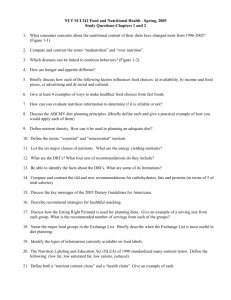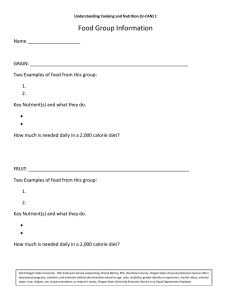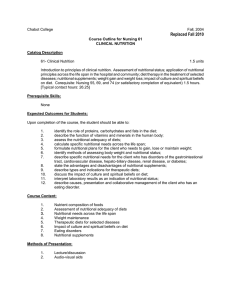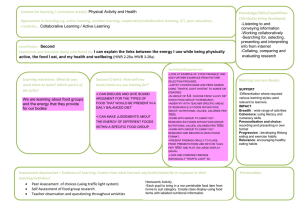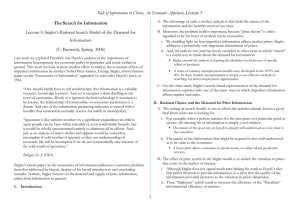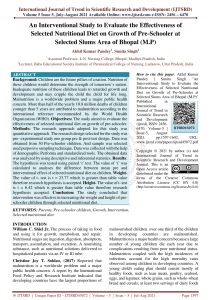The Diet Problem
advertisement
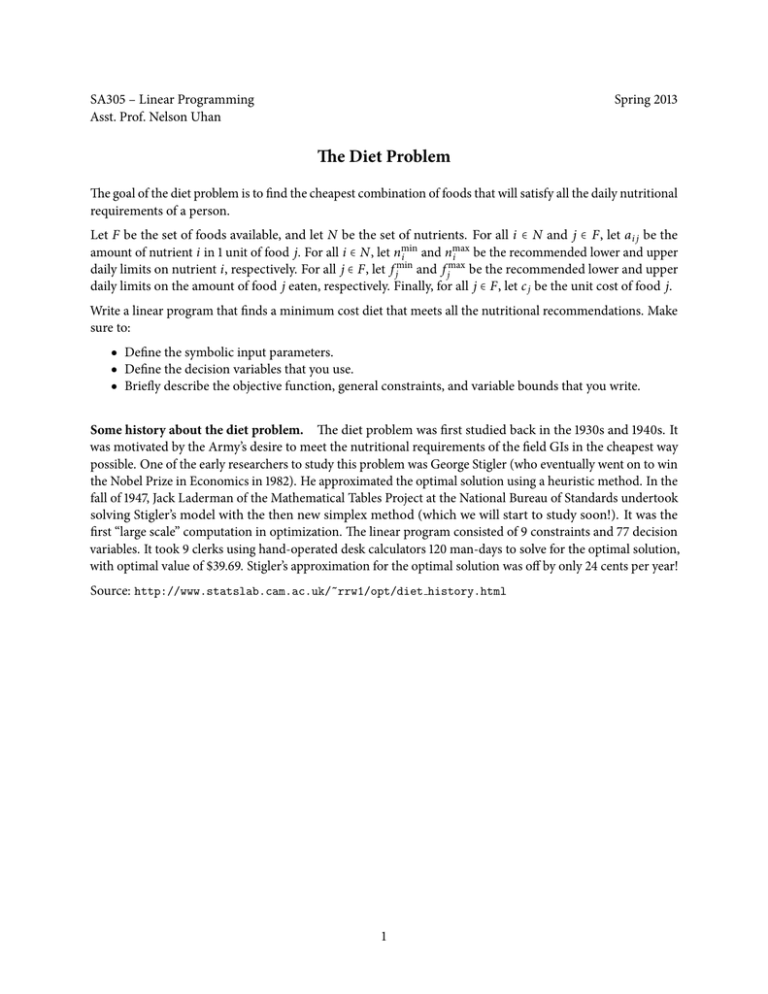
SA305 – Linear Programming Asst. Prof. Nelson Uhan Spring 2013 The Diet Problem The goal of the diet problem is to find the cheapest combination of foods that will satisfy all the daily nutritional requirements of a person. Let F be the set of foods available, and let N be the set of nutrients. For all i ∈ N and j ∈ F, let a i j be the amount of nutrient i in 1 unit of food j. For all i ∈ N, let nmin and nmax be the recommended lower and upper i i min daily limits on nutrient i, respectively. For all j ∈ F, let f j and f jmax be the recommended lower and upper daily limits on the amount of food j eaten, respectively. Finally, for all j ∈ F, let c j be the unit cost of food j. Write a linear program that finds a minimum cost diet that meets all the nutritional recommendations. Make sure to: ● Define the symbolic input parameters. ● Define the decision variables that you use. ● Briefly describe the objective function, general constraints, and variable bounds that you write. Some history about the diet problem. The diet problem was first studied back in the 1930s and 1940s. It was motivated by the Army’s desire to meet the nutritional requirements of the field GIs in the cheapest way possible. One of the early researchers to study this problem was George Stigler (who eventually went on to win the Nobel Prize in Economics in 1982). He approximated the optimal solution using a heuristic method. In the fall of 1947, Jack Laderman of the Mathematical Tables Project at the National Bureau of Standards undertook solving Stigler’s model with the then new simplex method (which we will start to study soon!). It was the first “large scale” computation in optimization. The linear program consisted of 9 constraints and 77 decision variables. It took 9 clerks using hand-operated desk calculators 120 man-days to solve for the optimal solution, with optimal value of $39.69. Stigler’s approximation for the optimal solution was off by only 24 cents per year! Source: http://www.statslab.cam.ac.uk/~rrw1/opt/diet history.html 1



